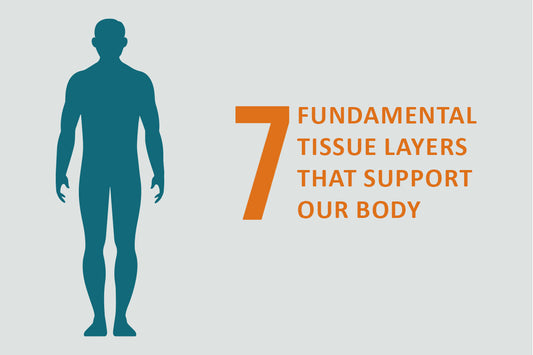Yoga is a beautiful practice that connects the mind, body, and soul. Among its many poses, Pranamasana, also known as the Prayer Pose, holds a special place. Simple yet powerful, this pose is often practiced at the start and end of a yoga session. It’s much more than just pressing your palms together at the front of the chest. It carries deep meaning, helps balance the body’s energy, and brings amazing health benefits.
Whether you’re standing in Mountain Pose or resting in a Squatting Position, adding Pranamasana to your yoga practice can help you feel grounded, calm, and centered. Let’s explore the top five health benefits of this timeless yoga pose.
What is Pranamasana (Prayer Pose)?
Pranamasana, or Prayer Position, involves bringing the palms together in front of the chest, with the fingers pointing upward. It symbolizes gratitude, respect, and balance. It’s also known as Anjali Mudra, a hand gesture that’s common in both yoga and meditation practices.
A variation called Eka Pada Pranamasana (One-Legged Prayer Pose) adds more challenge and helps with focus and balance. Another version, Reverse Prayer Pose, involves placing the hands together behind the back to open the shoulders and chest even more deeply.
In all its forms, Pranamasana creates a sense of peace, stability, and mindfulness.
- Creates a Sense of Calm and Balance
One of the first things you feel in Pranamasana is a wave of calmness. Pressing the palms together connects both sides of the body, helping to create a sense of balance.
Yoga teachers often guide students to focus on the breath during this pose. Deep breathing in Pranamasana signals the nervous system to slow down. This helps ease mental tension, supports emotional balance, and restores a feeling of inner peace. Practicing this pose at the start of a session can set a positive tone for your entire yoga practice.
- Supports Heart Chakra (Anahata Chakra) Healing
In yoga philosophy, the heart chakra (Anahata Chakra) is located in the center of the chest. It’s linked to love, compassion, and connection. Pranamasana directly activates this energy center.
When you bring your hands together at the front of the chest, you gently encourage the heart chakra to open. This can help maintain emotional wellbeing, support healthy relationships, and create a sense of self-love. Over time, regular practice of the Prayer Pose can help restore emotional harmony and self-confidence.
- Strengthens Posture and Core Stability
Although it looks simple, standing tall in Mountain Pose while holding Pranamasana calls for good posture. It teaches your body how to align properly — stacking your head over your spine, your shoulders over your hips, and your weight evenly over both feet.
Keeping the palms pressed together and the chest lifted helps activate the muscles of the core, back, and shoulders. If you practice Eka Pada Pranamasana — balancing on one leg while holding Prayer Position — you also train the small stabilizing muscles throughout your legs and hips.
This simple pose helps support strong posture, which can help ease common discomforts related to poor alignment.
- Encourages Mindfulness and Inner Focus
In our busy lives, it’s easy to get caught up in outside distractions. Pranamasana is a powerful way to turn your attention inward.
Whether you’re practicing at the start of your session or during a quiet moment on your yoga mat, the Prayer Pose invites mindfulness. It encourages you to focus on your breath, your heartbeat, and your inner thoughts.
By bringing awareness to the present moment, you help maintain mental clarity and emotional stability. Practicing mindfulness through Pranamasana can also support better decision-making and self-awareness over time.
- Prepares the Body and Mind for Deeper Yoga Poses
Pranamasana is often used as a starting point for many yoga sequences. It warms up the body and mind gently, preparing you for deeper stretches, standing poses, and balancing postures.
Holding Prayer Position helps awaken the connection between the breath and body movements. It sets a mindful rhythm for your yoga practice, making every pose more meaningful.
In poses like the Reverse Prayer Pose, where hands are pressed together behind the back, the shoulders and chest open up even more. This can help ease tension in the upper body and support healthy mobility.
Starting your yoga flow with Pranamasana helps create a solid foundation for a steady, thoughtful practice.
How to Practice Pranamasana (Prayer Pose)
Here’s a simple guide you can follow:
- Stand in Mountain Pose with feet hip-width apart on your yoga mat.
- Bring your palms together in front of your chest.
- Press the palms firmly but gently against each other.
- Close your eyes if you like, and focus on your breath.
- Hold for several breaths, feeling the energy at your heart center.
- To try Eka Pada Pranamasana, lift one foot and place it against the inner thigh or calf of the standing leg while maintaining Prayer Position.
- For Reverse Prayer Pose, reach both arms behind your back and bring the palms together facing upward.
Remember to stay patient with yourself. It’s about feeling connected — not achieving a perfect pose.
Final Thoughts
Pranamasana may look simple, but its effects go deep. Whether you're new to yoga or a seasoned practitioner, taking a few mindful moments in Prayer Pose can help restore balance, ease mental stress, and support emotional wellbeing.
By connecting body, breath, and spirit through this timeless yoga pose, you create a strong, peaceful foundation for everything else — both on and off the mat.






